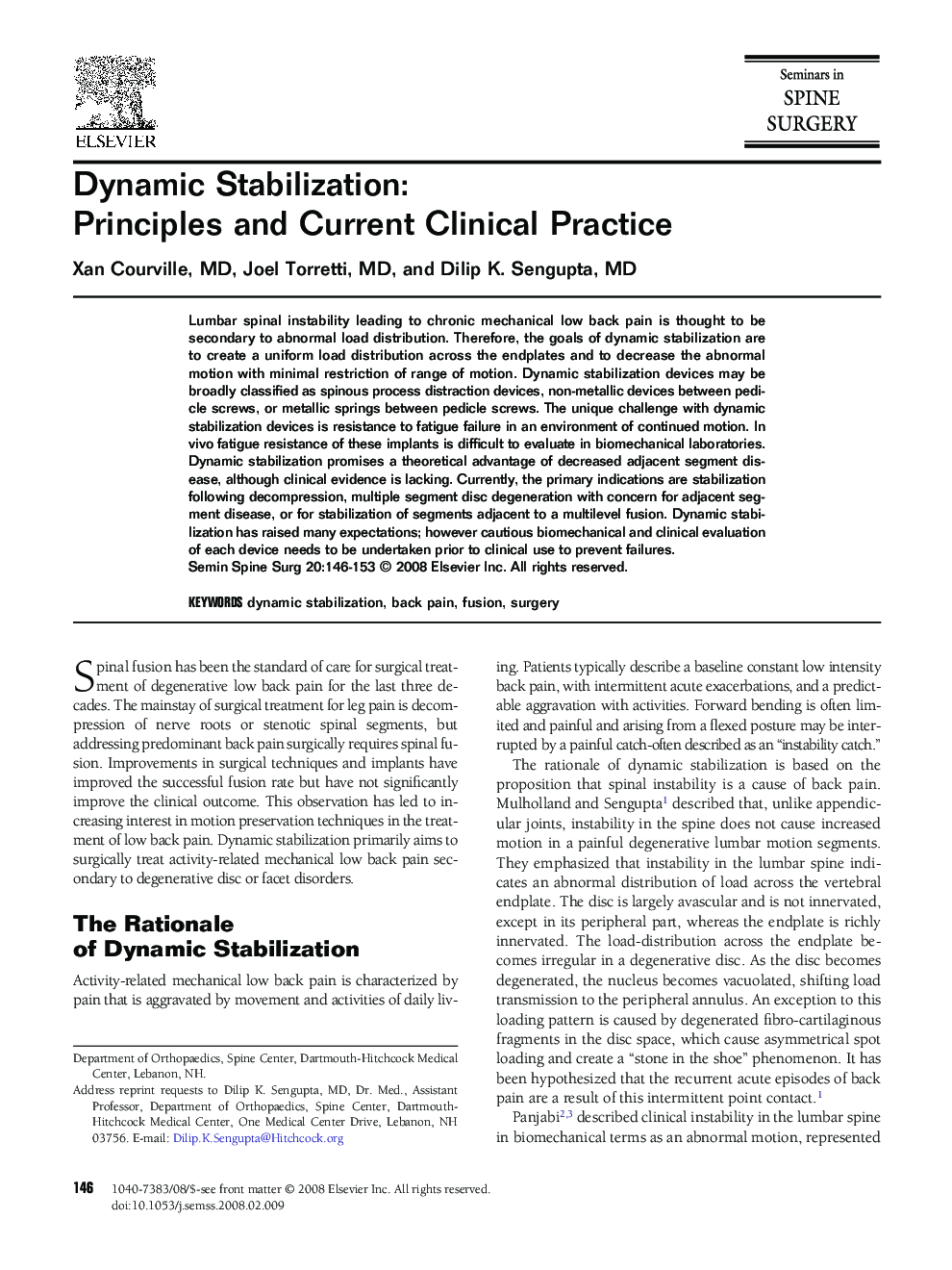| کد مقاله | کد نشریه | سال انتشار | مقاله انگلیسی | نسخه تمام متن |
|---|---|---|---|---|
| 4095071 | 1268506 | 2008 | 8 صفحه PDF | دانلود رایگان |

Lumbar spinal instability leading to chronic mechanical low back pain is thought to be secondary to abnormal load distribution. Therefore, the goals of dynamic stabilization are to create a uniform load distribution across the endplates and to decrease the abnormal motion with minimal restriction of range of motion. Dynamic stabilization devices may be broadly classified as spinous process distraction devices, non-metallic devices between pedicle screws, or metallic springs between pedicle screws. The unique challenge with dynamic stabilization devices is resistance to fatigue failure in an environment of continued motion. In vivo fatigue resistance of these implants is difficult to evaluate in biomechanical laboratories. Dynamic stabilization promises a theoretical advantage of decreased adjacent segment disease, although clinical evidence is lacking. Currently, the primary indications are stabilization following decompression, multiple segment disc degeneration with concern for adjacent segment disease, or for stabilization of segments adjacent to a multilevel fusion. Dynamic stabilization has raised many expectations; however cautious biomechanical and clinical evaluation of each device needs to be undertaken prior to clinical use to prevent failures.
Journal: Seminars in Spine Surgery - Volume 20, Issue 2, June 2008, Pages 146–153